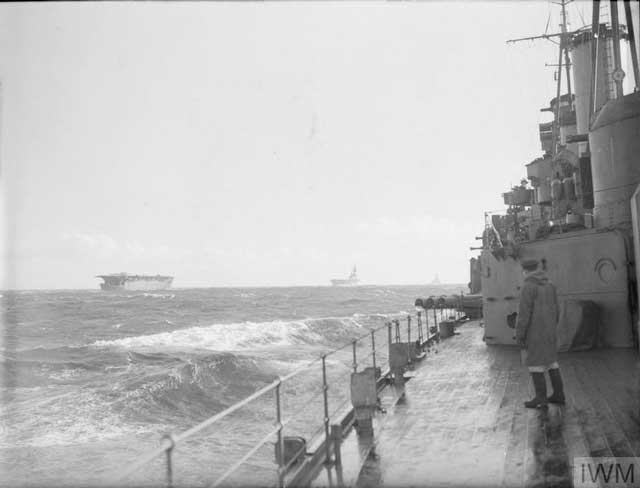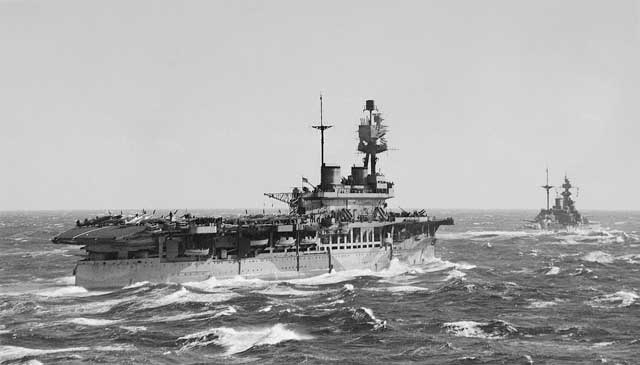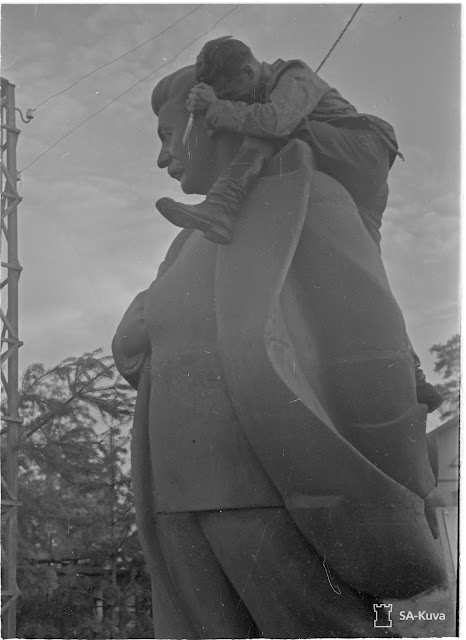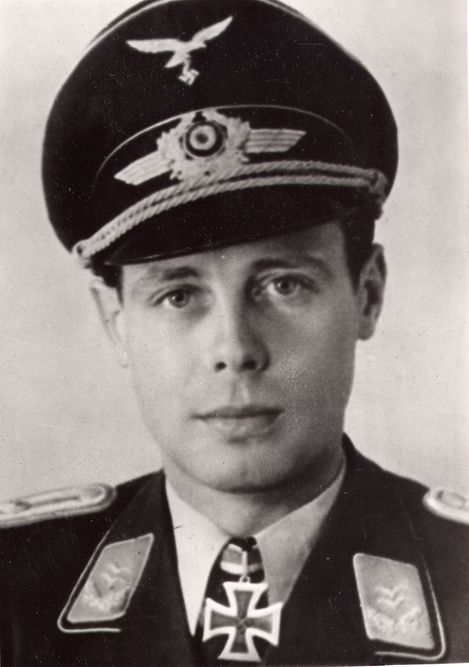Saturday 7 March 1942
 |
| Japanese troops advancing in Java, March 1942 (Sectie Militaire Geschiedenes Landmachstaf). |
As at other ports facing capture, the Allies scuttle any ships at Rangoon that can't escape - but most have been able to leave due to the proximity of India and the time taken by the Japanese to cross Burma. This includes 382-ton British freighter SS Nyounghla. In the coming decades, the British Army awards the battle honors Pegu and Pegu 1942 to participants.
South of Java, Japanese aircraft bomb and sink 3051-ton Norwegian freighter SS Woolgar. The crew manages to launch one lifeboat, and the crew endures an epic 88-day journey to Port Blair, Andaman Islands, where the Japanese make them prisoners. Japanese destroyer Arashio intercepts Dutch minesweepers Jan Van Amstel, which also is trying to escape Java, and sinks it. There are 23 deaths and the rest of the crew become prisoners.
Pleased with the success of the flying boat raid on Hawaii of 4 March 1942, the Japanese plan a second "K Operation" for 7 March. However, the planes and crew are not ready, so the operation is postponed to 10 March. The Americans, meanwhile, have been listening to Japanese propaganda broadcasts boasting of the raid's effects (which in reality were negligible), figure out how it was carried out, and prepare to give another such attack a hot reception.
 |
| "The aircraft carrier HMS ARGUS which acted as fighter escort, with HMS EAGLE (center) and the battleship HMS MALAYA (right distance) prior to flying off to Malta of the Spitfires." 7 March 1942. © IWM (A 7953). |
European Air Operations: After dark, RAF Bomber Command sends 17 bombers to attack the U-boat pens at St. Nazaire. Another 17 Hampden bombers lay mines off Lorient, another major U-boat base. One Hampden fails to return.
 |
| SS Barbara, sunk on 7 March 1942. |
U-126 also sinks 5104-ton US freighter Cardonia in the same area. This time, Bauer uses his deck gun after the Cardonia's crew spots the U-boat sinking the Barbara and evades two torpedoes. After firing 56 rounds, the ship catches fire. After the crew abandons ship, Bauer fires a coup de grâce torpedo which sinks the ship at 12:16. Twenty of the crew make landfall in a lifeboat, while 15 others are rescued by USS Mulberry. The master, Gus Warren Darnell, is awarded the Merchant Marine Distinguished Service Medal for his evasive maneuvers and other conduct during the attack. Overall, there is one dead (in the initial attack) and 37 survivors.
U-155 (Kptlt. Adolf Cornelius Piening), on its first patrol out of Lorient, torpedoes and sinks 7874-ton Brazilian tanker Arabutan about 81 miles off Cape Hatteras. Arabutan sinks within 13 minutes. Piening claims to have seen no neutrality markings. The crew successfully launches the lifeboats and are rescued quickly by USCGC USS Calypso. There are 54 survivors and one death.
 |
| SS Uniwaleco, sunk on 7 March 1942. |
U-701 (Kptlt. Horst Degen), on its second patrol out of St. Nazaire, torpedoes and sinks Danish 272-ton fishing trawler FV Nyggjaberg in the North Atlantic near Iceland. There are no survivors from the 21-man crew.
 |
| The Russian steamer Ishora is under fire from the German destroyer Hermann Schoemann in the afternoon of 7 March 1942. The photo is taken from the German destroyer Z 25 by V. Gernhard. |
 |
| "HMS EAGLE and HMS MALAYA whilst serving with Force H in the Mediterranean. Supermarine Spitfires are ranged on the deck of HMS EAGLE (photograph was taken from the aircraft carrier HMS ARGUS)." © IWM (A 7840). |
Applied Science: US Navy non-rigid airship K-5 conducts a successful experiment in conjunction with the submarine USS S-20 off the New London, Connecticut coast fo a radio sonobuoy. The experiment shows the utility of using sonobuoys to detect the sounds of a submerged submarine's propellers. The blimp receives the signals at a distance of up to three miles and sometimes up to five miles.
 |
| "The ship's doctor giving a lecture on first aid to crew members on HMS ATHERSTONE at Plymouth, 7 March 1942." © IWM (A 7761). |
US Navy Patrol Wing 10 completes a three-month, roundabout withdrawal from the Philippines via Java to Perth, Western Australia. The unit has been devastated by enemy action and having to leave equipment and ground personnel behind. Three out of its four wing squadrons (VP-21, VP-22, and VP-102) are officially stricken from the order of battle. The sole remaining squadron, VP-101, will conduct patrol operations off the Australian west coast, which the Japanese Air Force recently has raided, with its PBY-4 and PBY-5 Catalinas.
 |
| "The aircraft carrier HMS ARGUS which acted as fighter escort, with HMS EAGLE (center) and the battleship HMS MALAYA (right distance) prior to flying off to Malta of the Spitfires." 7 March 1942. © IWM (A 7954). |
USAAF Fifth Air Force transfers the Headquarters, 22nd Bomber Group (Medium), from Brisbane to Ipswich, Australia.
The Tuskegee flying school for black pilots graduates its first class of students. They join the 99th Pursuit Squadron. The men are Capt. Benjamin O. Davis Jr., and Second-Lieutenants Mac Ross, Charles DeBow, LR Curtis, and George Roberts.
 |
| The first four Tuskegee airmen graduates, including Captain Ben Davis (US Air Force Historical Foundation). |
Word has come to us the Japanese timetable will bring the second phase of their plans into action about April 15. This includes a major attack on Hawaii, and the commencement of sabotage action on the West Coast, in preparation for events to follow.
If our administrative officials do not get down to quick action to evacuate all Japanese and all other enemy aliens immediately — They may, by inaction, have committed so great a sin that even history may never forgive them.There is a very real fear of a Japanese invasion all along the coast.
 |
| The New Yorker, 7 March 1942. |
We've heard from a naval officer who got promoted recently, which necessitated a reshuffling of his insignia. When his stars were removed, he found, on the back of each, a label reading "Made in Japan."Well, times sure have changed in a hurry.
The San Francisco News continues its series of "helpful hints" to ethnic Japanese regarding their coming internment. In today's entry, the paper warns against leaving too hastily to their new homes:
General DeWitt again cautioned the aliens and Japanese-Americans against a too hasty disposition of farms, shops, residences, and other property, pointed out that Federal officials are being appointed to assist them in handling and transfer of their property. Until they have an opportunity to turn their properties over to an official custodian, such persons should not dispose of their possessions unless they receive full value in return, the general said.There is a surreal air to these articles, which treat the evacuations as akin to a going away to summer camp with the government's sole aim to make the journey as painless and safe as possible.
 |
| The Saturday Evening Post, 7 March 1942. |
Tamara Faye LaValley is born in International Falls, Minnesota. In 1960, Tamara (known as Tammy Faye) meets Jim Bakker and marries him a year later. Together, they form a popular televangelist organization, the PTL (Praise The Lord) Club, which takes them to heights of fame. In 1987, Jim and Tammy Faye Bakker get embroiled in scandal due to Jim Bakker's involvement with assistant Jessica Hahn. Tammy Faye divorces Bakker in 1992 after he is sent to prison for 45 years on 24 fraud and conspiracy counts. her next marriage, to property developer Roe Messner, also involves scandal when he is convicted of bankruptcy fraud. Tammy Faye Messner (her final name) passes away on 20 July 2007 from cancer.
 |
| Collier's, 7 March 1942. During World War II, Collier's readership reaches 2.5 million. |
March 1942
March 1, 1942: Second Battle of Java Sea
March 2, 1942: Huge Allied Shipping Losses at Java
March 3, 1942: Japan Raids Western Australia
March 4, 1942: Second Raid On Hawaii
March 5, 1942: Japan Takes Batavia
March 6, 1942: Churchill Assaults Free Speech
March 7, 1942: British Defeat in Burma
March 8, 1942: Rangoon Falls to Japan
March 9, 1942: Japanese Conquest of Dutch East Indies
March 10, 1942:US Navy attacks Japanese Landings at Lae
March 11, 1942: Warren Buffett's First Stock Trade
March 12, 1942: Japan Takes Java
March 13, 1942: Soviets Attack In Crimea Again
March 14, 1942: The US Leans Toward Europe
March 15, 1942: Operation Raubtier Begins
March 16, 1942: General MacArthur Gets His Ride
March 17, 1942: MacArthur Arrives in Australia
March 18, 1942: Japan Attacks In Burma
March 19, 1942: Soviets Encircled on the Volkhov
March 20, 1942: "I Shall Return," Says MacArthur
March 21, 1942: Germans Attack Toward Demyansk
March 22, 1942: Second Battle of Sirte
March 23, 1942: Hitler's Insecurity Builds
March 24, 1942: Bataan Bombarded
March 25, 1942: Chinese Under Pressure in Burma
March 26, 1942: Win Or Die, Vows MacArthur
March 27, 1942: The Battle of Suusari
March 28, 1942: The St. Nazaire Commando Raid
March 29, 1942: The Free Republic of Nias
March 30, 1942: Japanese-Americans Off Bainbridge Island
March 31, 1942: Japanese Seize Christmas Island
2020
























